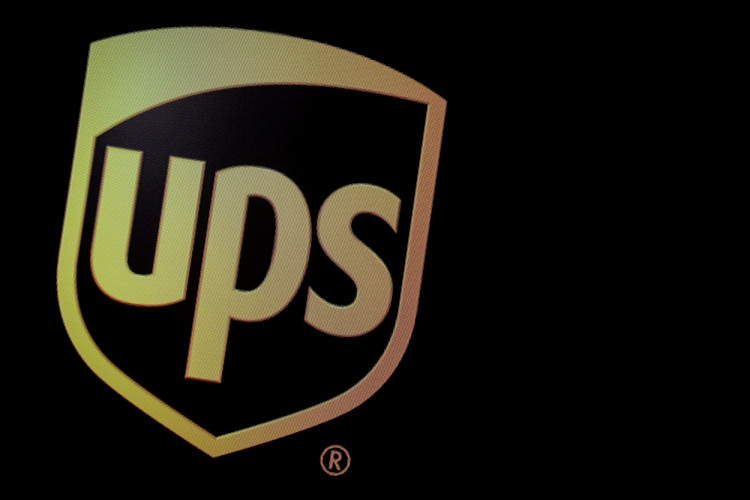UPS saw a notable rise in its stock on Thursday after reporting third-quarter results that exceeded analysts' expectations. The shipping giant reported $22.2 billion in revenue, surpassing the consensus estimate of $21.94 billion, according to Visible Alpha. Net income for the quarter came in at $1.54 billion, or $1.80 per share, above the expected $1.36 billion and $1.59 per share. This marks the first time in nearly two years that UPS has achieved year-over-year revenue and profit growth, reflecting a significant recovery from the challenges posed by the post-pandemic shipping downturn.
UPS Chief Executive Officer Carol Tomé expressed optimism about the company's performance, stating, "After a challenging 18-month period, our company returned to revenue and profit growth. Peak season is nearly upon us, and we are ready to deliver another successful holiday season and continue the progress we demonstrated in the third quarter."
Despite the strong quarterly performance, UPS lowered its full-year revenue forecast, adjusting it from $93 billion to $91.1 billion. The revision reflects the ongoing competitive pressures in the shipping industry, including rising competition from Amazon and market shifts driven by consumer behavior changes in the e-commerce space. UPS shares, while up 8.3% after the earnings release, have declined by more than 10% so far this year. Concerns over FedEx's disappointing earnings and a broader slowdown in shipping demand have contributed to this decline.
A key driver of UPS's third-quarter growth was the rebound in U.S. domestic volumes, which grew by 6.5%. This recovery followed nine consecutive quarters of weaker demand, as the surge in online shopping during the pandemic tapered off. UPS benefited from new partnerships with emerging e-commerce players like Shein and Temu, which helped to boost its shipping volumes. However, this volume growth has come with a shift towards lower-margin services, including ground shipping and SurePost, where UPS handles part of the delivery and passes the final leg to the U.S. Postal Service.
While these lower-margin services impacted profitability, UPS's improved operational efficiency allowed the company to raise its full-year adjusted operating margin forecast to 9.6%, up from the 9.4% projected in July. Analysts highlighted that UPS's ability to control costs and streamline operations contributed significantly to this positive outlook. Jonathan Chappell, an equity analyst at Evercore ISI, noted that "UPS seems to be controlling what it can at this late stage in the cycle," suggesting that cost management is helping offset broader macroeconomic challenges.
UPS's adjusted operating margin for the third quarter was 8.9%, an improvement over last year's 7.7%. The company also posted an adjusted profit per share of $1.76, surpassing analysts' expectations of $1.63. Consolidated revenue reached $22.25 billion, slightly above the $22.14 billion forecast.
A significant development for UPS this quarter was the onboarding of the U.S. Postal Service air cargo business, a five-year contract that started in late September. UPS took over the contract from rival FedEx, and the deal is expected to be profitable in its first year. This new revenue stream is set to bolster UPS's financial position as the company looks to navigate an increasingly competitive shipping landscape.
However, challenges remain. UPS, like its rivals, faces ongoing economic uncertainty, fluctuating consumer demand, and increased competition from Amazon's in-house logistics network. Some analysts have expressed concerns over UPS's ability to maintain its market share as Amazon continues to expand its logistics capabilities. Barclays analysts downgraded UPS to "underweight" earlier in the week, citing these competitive pressures and FedEx's weak earnings report as reasons for caution.
Despite these concerns, UPS's positive third-quarter results have instilled a sense of optimism as the company enters the peak holiday season. The upcoming months will be crucial for UPS, as it works to meet growing demand while managing costs effectively. The company's strong performance in the third quarter offers hope that it can navigate the challenges ahead, though the lowered revenue outlook reflects the cautious approach UPS is taking as it eyes a potentially volatile market environment.
Faisal Hersi, an industrials senior analyst at Edward Jones, expressed confidence in UPS's trajectory, saying, "They're headed in the right direction." With the holiday season around the corner, UPS is gearing up to capitalize on the busiest shipping period of the year, while keeping a close eye on its longer-term strategy to ensure continued profitability and growth.






